This post was originally published on May 24, 2023
The latest update to this post was made 10 months ago.
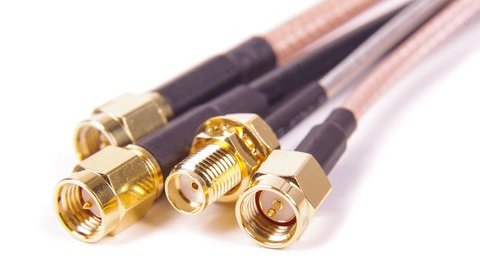 Different Types Of Coaxial Cables
Different Types Of Coaxial Cables
There are several types of coaxial cables available for ham radio operators. The most commonly used is the RG-8X, which is a standard-sized cable that provides excellent performance at affordable prices. It has an impedance of 50 ohms and can handle up to 1,000 watts of power. Another popular choice is the LMR-400 series cable, which has a larger diameter than the RG-8X and can handle more power. It also features low loss characteristics that make it ideal for longer runs.
For those who require even higher power handling capabilities, there’s the LMR-600 series cable. This type of cable has a much larger diameter than either the RG-8X or LMR-400 and can handle up to 10,000 watts of power. Choosing the right coaxial cable is crucial in ensuring reliable and efficient communication on your ham radio network. A good quality coaxial cable will minimize signal loss while preventing interference from external sources such as RF noise or electromagnetic fields. Remember to choose a properly sized coaxial cable based on your specific needs and requirements so you can enjoy clear communication without any interruptions.
Did You Know
- “RG” stands for Radio Guide, a military specification for coax cables, dating back to World War II. In today’s world, this is commonly referred to as the ‘Mil-C-17’ standard.
- There is no clear answer for what “LMR” stands for. There are rumors of “Land & Mobile Radio” coax or “Lockheed Martin Radar” coax, but these are just that… rumors!
Common Coaxial Cables
RG-6/U | RG-6/UQ
Typical uses: TV, Cable Internet, TV Antennas, Satellite TV
Specs: 75 ohm, 18 AWG
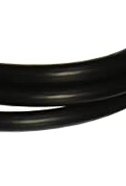 RG-6 U coaxial cable is commonly used in the broadcasting industry due to its superior signal quality and low loss. It has a 75 ohm impedance and is designed to transmit high-frequency signals efficiently. This type of cable typically consists of a copper core wire surrounded by insulating material, which is then wrapped in an aluminum foil shield and covered by a protective outer sheath. One major advantage of RG-6 cable is its ability to transmit signals over long distances without significant signal loss or degradation. This makes it an ideal choice for transmitting audio and video signals between devices like televisions, receivers, and antennas.
RG-6 U coaxial cable is commonly used in the broadcasting industry due to its superior signal quality and low loss. It has a 75 ohm impedance and is designed to transmit high-frequency signals efficiently. This type of cable typically consists of a copper core wire surrounded by insulating material, which is then wrapped in an aluminum foil shield and covered by a protective outer sheath. One major advantage of RG-6 cable is its ability to transmit signals over long distances without significant signal loss or degradation. This makes it an ideal choice for transmitting audio and video signals between devices like televisions, receivers, and antennas.
Additionally, RG-6 cables are often used as internet wiring in homes because they are capable of carrying broadband signals at high speeds. Despite its many benefits, RG-6 coaxial cables do have some limitations. They cannot be used for transmitting power or for direct burial applications because the outer shielding can corrode when exposed to moisture or soil. However, when properly installed and maintained, RG-6 cables provide reliable connections for all kinds of electronic equipment and communication systems. Another variant: RG-6 UQ offers quad shielding, where are normal RG-6 has one or two shielding layers.
RG-8/U | RG-8/X
Typical uses: Amateur Radio
Specs: 50 ohm, 12 AWG (RG-8/X 16 AWG)
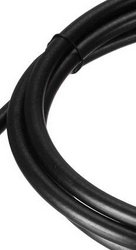 RG-8 U cable is a popular type of coaxial cable used in ham radio communication because of its heavy-duty nature. It has a stranded copper center conductor, polyethylene dielectric, and aluminum foil shielding with a braided outer conductor. The cable’s jacket is made of PVC or PE that makes it resistant to weather conditions, UV rays, and abrasion. When compared to other types of coax cables, RG-8 U is ideal for long-distance communication because it offers low attenuation and high power handling capacity.
RG-8 U cable is a popular type of coaxial cable used in ham radio communication because of its heavy-duty nature. It has a stranded copper center conductor, polyethylene dielectric, and aluminum foil shielding with a braided outer conductor. The cable’s jacket is made of PVC or PE that makes it resistant to weather conditions, UV rays, and abrasion. When compared to other types of coax cables, RG-8 U is ideal for long-distance communication because it offers low attenuation and high power handling capacity.
Its impedance rating is 50 ohms which matches well with most amateur radio transceivers and antennas. However, the downside to this heavy-duty option is its weight and bulkiness. It may not be suitable for portable operations where lightweight equipment is required. But for those who are looking for a reliable and durable option for their home station or base station setup, RG-8 U can provide excellent performance even in challenging environments. RG-8/X is the same as RG-8/U just a thinner version.
RG-11/U
Typical uses: Cable & Satellite TV, Long Cable Runs, Underground Burial, Some Amateur Radio
Specs: 75 ohm, 14 AWG
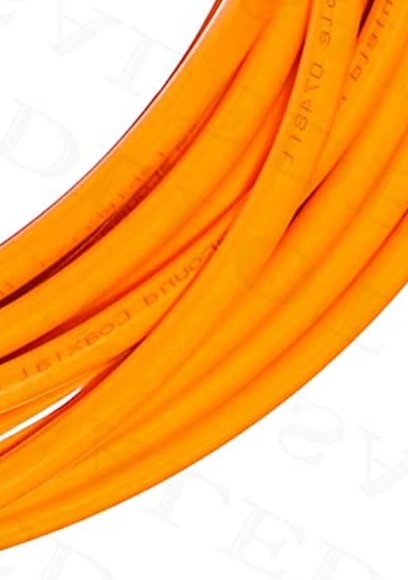 RG-11 U is a type of coaxial cable that can be used for ham radio. It has a larger diameter than other types of cables, which allows it to transmit signals over longer distances without losing power. The cable consists of an inner conductor made of copper or aluminum, surrounded by insulation and a braided shield, and then covered in an outer jacket. One advantage of using RG-11 for ham radio is that it has low loss, meaning that the signal remains strong even as it travels long distances.
RG-11 U is a type of coaxial cable that can be used for ham radio. It has a larger diameter than other types of cables, which allows it to transmit signals over longer distances without losing power. The cable consists of an inner conductor made of copper or aluminum, surrounded by insulation and a braided shield, and then covered in an outer jacket. One advantage of using RG-11 for ham radio is that it has low loss, meaning that the signal remains strong even as it travels long distances.
This makes it ideal for use in outdoor antennas or when transmitting signals across large areas. However, because it is thicker and less flexible than other types of coaxial cables, it may be more difficult to install in some locations. While RG-11 can be more expensive than other types of coaxial cable, its performance capabilities make it a popular choice among serious ham radio operators who require reliable transmission over long distances. It is important to choose the right type of cable based on your specific needs and the requirements of your equipment and setup.
RG-58/U
Typical uses: Radio Communications, Amateur Radio, 10Base2 Ethernet
Specs: 50 ohm, 20 AWG
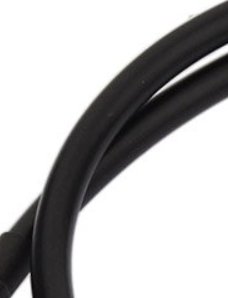 RG-58 U is the most commonly used coaxial cable in the amateur radio community. It is a versatile and affordable option that can handle frequencies up to 1 GHz, making it suitable for many ham radio applications. RG-58 U is typically used for short runs of less than 100 feet, although longer runs are possible with proper termination techniques. One of the main advantages of RG-58 U is its availability. It can be found at most electronic stores and online retailers, often at a lower cost than other types of coaxial cable.
RG-58 U is the most commonly used coaxial cable in the amateur radio community. It is a versatile and affordable option that can handle frequencies up to 1 GHz, making it suitable for many ham radio applications. RG-58 U is typically used for short runs of less than 100 feet, although longer runs are possible with proper termination techniques. One of the main advantages of RG-58 U is its availability. It can be found at most electronic stores and online retailers, often at a lower cost than other types of coaxial cable.
Additionally, it has a compact size and flexibility which makes it easy to work with in tight spaces or when routing through walls and ceilings. However, there are some downsides to using RG-58 U. Its signal loss increases significantly over longer distances compared to higher quality cables such as LMR400 or LMR600. Additionally, its thin shielding may not provide adequate protection against interference from nearby sources. Despite these limitations, RG-58 U remains a popular choice due to its affordability and versatility for many ham radio enthusiasts.
RG-59/U | RG-59 A/U
Typical uses: Closed Circuit TV Cameras, Formerly Cable TV & Satellite TV
Specs: 75 ohm, 20 AWG
 RG-59 U is a type of coaxial cable that is commonly used in CCTV (closed-circuit television) systems. It has a 75-ohm impedance and features a copper-clad steel center conductor, surrounded by layers of dielectric material, braided shielding, and an outer layer of PVC jacketing. The RG-59 cable provides good video transmission quality over shorter distances and is cost-effective compared to other options. However, when it comes to ham radio applications, RG-59 may not be the best choice due to its higher loss at high frequencies. This means that signals transmitted through RG-59 may experience more attenuation than other coaxial cables designed for higher frequencies.
RG-59 U is a type of coaxial cable that is commonly used in CCTV (closed-circuit television) systems. It has a 75-ohm impedance and features a copper-clad steel center conductor, surrounded by layers of dielectric material, braided shielding, and an outer layer of PVC jacketing. The RG-59 cable provides good video transmission quality over shorter distances and is cost-effective compared to other options. However, when it comes to ham radio applications, RG-59 may not be the best choice due to its higher loss at high frequencies. This means that signals transmitted through RG-59 may experience more attenuation than other coaxial cables designed for higher frequencies.
As a result, many ham radio enthusiasts opt for cables like RG-8 or LMR-400 instead of RG-59. Overall, while RG-59 can be an effective option for certain applications like CCTV systems or low frequency transmissions, it’s important to consider the specific needs of your ham radio use case before selecting a coaxial cable type. The variant RG-59 A/U has a higher velocity factor.
RG-142
Typical uses: High Temperature, Interconnections Between Equipment, Commercial Wireless, GPS, Radar, Some Amateur Radio
Specs: 50 ohm, 20 AWG
 RG-142 is a type of coaxial cable commonly used for RF (radio frequency) applications. It is a higher performance cable compared to RG-174 and is designed for applications requiring low loss and high-frequency operation. The specific American Wire Gauge (AWG) size of the center conductor in RG-142 cable is typically 20 AWG. The outer diameter of RG-142 cable is approximately 0.195 inches or 4.95 millimeters.
RG-142 is a type of coaxial cable commonly used for RF (radio frequency) applications. It is a higher performance cable compared to RG-174 and is designed for applications requiring low loss and high-frequency operation. The specific American Wire Gauge (AWG) size of the center conductor in RG-142 cable is typically 20 AWG. The outer diameter of RG-142 cable is approximately 0.195 inches or 4.95 millimeters.
It has a characteristic impedance of 50 ohms, similar to many other RF coaxial cables. RG-142 cable offers lower loss and higher power handling capability compared to thinner cables like RG-174. It is often used in applications such as telecommunications, military equipment, aerospace, and test and measurement systems where reliable signal transmission is crucial.
RG-174
Typical uses: WIFI Pigtails, Amateur Radio, High Frequency Transmissions
Specs: 50 ohm, 26 AWG
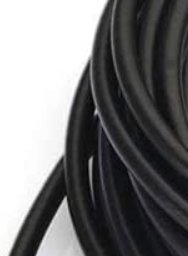 RG-174 is a type of coaxial cable commonly used for RF (radio frequency) applications. It is a thin and flexible cable that is often used for low-power and short-distance signal transmission. The American Wire Gauge (AWG) size of the center conductor in RG-174 cable is typically 26 AWG. The outer diameter of RG-174 cable is approximately 0.105 inches or 2.67 millimeters.
RG-174 is a type of coaxial cable commonly used for RF (radio frequency) applications. It is a thin and flexible cable that is often used for low-power and short-distance signal transmission. The American Wire Gauge (AWG) size of the center conductor in RG-174 cable is typically 26 AWG. The outer diameter of RG-174 cable is approximately 0.105 inches or 2.67 millimeters.
It has a characteristic impedance of 50 ohms and is commonly used for applications such as RF antenna connections, GPS systems, Wi-Fi modules, and other similar applications where flexibility and small size are important. RG-174 cable has relatively higher signal loss compared to thicker coaxial cables like LMR-200 or LMR-400. Therefore, it is generally used for shorter cable runs and low-power applications.
RG-213
Typical uses: Radio Communications, Amateur Radio, Antenna Cables
Specs: 50 ohm, 13 AWG
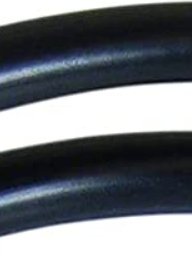 RG-213 is a type of coaxial cable that is used by many ham radio operators. It is known for its durability and versatility, making it an ideal choice for a wide range of applications. RG-213 U has a solid copper center conductor with a diameter of 0.285 inches, which provides excellent conductivity and low loss. One of the key advantages of RG-213 U is its ability to handle high power levels without suffering from excessive signal loss or damage to the cable itself. This makes it an excellent choice for use with high-power amplifiers or in situations where long cable runs are required.
RG-213 is a type of coaxial cable that is used by many ham radio operators. It is known for its durability and versatility, making it an ideal choice for a wide range of applications. RG-213 U has a solid copper center conductor with a diameter of 0.285 inches, which provides excellent conductivity and low loss. One of the key advantages of RG-213 U is its ability to handle high power levels without suffering from excessive signal loss or damage to the cable itself. This makes it an excellent choice for use with high-power amplifiers or in situations where long cable runs are required.
Additionally, RG-213 U has good shielding properties, which helps to reduce interference from external sources and improve overall signal quality. Overall, RG-213 U is a reliable and versatile coaxial cable that can be used in a variety of different applications by ham radio operators. Whether you are looking for a cable that can handle high power levels or one that provides good shielding against external interference, RG-213 U is an excellent choice that delivers consistent performance over time.
LMR-240
Typical uses: Amateur Radio, Replacement For RG-8/X
Specs: 50 ohm, ~16 AWG (Estimate)
Notes: The AWG rating of LMR-240 cable is not typically specified because it uses a different classification system called the Military Specification (MIL-SPEC) designation.
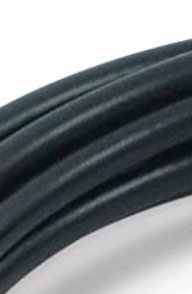 LMR-240 is a type of coaxial cable commonly used for RF (radio frequency) applications. Like other LMR cables, LMR-240 is manufactured by Times Microwave Systems and designed for low-loss transmission of RF signals. LMR-240 has a larger outer diameter compared to LMR-200, with a nominal value of approximately 0.240 inches or 6.10 millimeters.
LMR-240 is a type of coaxial cable commonly used for RF (radio frequency) applications. Like other LMR cables, LMR-240 is manufactured by Times Microwave Systems and designed for low-loss transmission of RF signals. LMR-240 has a larger outer diameter compared to LMR-200, with a nominal value of approximately 0.240 inches or 6.10 millimeters.
However, it’s worth noting that LMR-240 usually has a larger center conductor compared to LMR-200. The precise AWG size of the center conductor in LMR-240 may vary between different manufacturers. To obtain the accurate AWG size of LMR-240 cable from a specific manufacturer, it is best to refer to their documentation or specifications.
RG-316
Typical uses: Radio & Data Communications, Robust, Some Amateur Radio
Specs: 50 ohm, 26 AWG
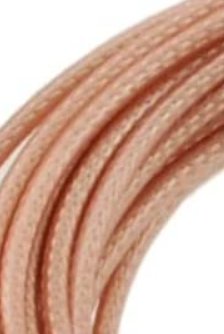 RG-316 is a type of coaxial cable commonly used for RF (radio frequency) applications. It is a thin and flexible cable designed for applications that require compact and lightweight solutions with good RF performance. The specific American Wire Gauge (AWG) size of the center conductor in RG-316 cable is typically 26 AWG.
RG-316 is a type of coaxial cable commonly used for RF (radio frequency) applications. It is a thin and flexible cable designed for applications that require compact and lightweight solutions with good RF performance. The specific American Wire Gauge (AWG) size of the center conductor in RG-316 cable is typically 26 AWG.
The outer diameter of RG-316 cable is approximately 0.116 inches or 2.95 millimeters. It has a characteristic impedance of 50 ohms, similar to many other RF coaxial cables. RG-316 cable offers good performance at high frequencies and is often used in applications such as wireless communication systems, GPS receivers, test and measurement equipment, and other RF applications where space and weight are critical factors.
LMR-400 | KMR-400
Specs: 50 ohm, ~10 AWG (Estimate)
Notes: The AWG rating of LMR-400 cable is not typically specified because it uses a different classification system called the Military Specification (MIL-SPEC) designation.
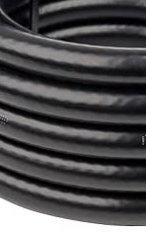 LMR-400 is a type of coaxial cable that is commonly used by amateur radio operators. It is known for its low-loss characteristic which makes it ideal for long distance transmission. The cable has a solid center conductor which provides better signal conductivity and eliminates the need for an extra jumper cable, reducing the chances of signal degradation. One of the main advantages of LMR-400 over other types of coaxial cables is its durability. It can withstand harsh weather conditions such as extreme heat, cold, and rain, making it perfect for outdoor antenna installations.
LMR-400 is a type of coaxial cable that is commonly used by amateur radio operators. It is known for its low-loss characteristic which makes it ideal for long distance transmission. The cable has a solid center conductor which provides better signal conductivity and eliminates the need for an extra jumper cable, reducing the chances of signal degradation. One of the main advantages of LMR-400 over other types of coaxial cables is its durability. It can withstand harsh weather conditions such as extreme heat, cold, and rain, making it perfect for outdoor antenna installations.
Additionally, the cable has excellent shielding properties which protect against electromagnetic interference (EMI) and radio frequency interference (RFI). In summary, LMR-400 is a great choice for ham radio enthusiasts who are looking for reliable and efficient transmission over long distances. Its low-loss characteristic ensures minimal signal attenuation while its durability guarantees longevity even in tough weather conditions. With proper installation and maintenance, this type of coaxial cable can provide years of optimal performance. See section below for key comparisons of KMR vs LMR.
50 Ohm -vs- 75 Ohm: Which To Choose?
When it comes to selecting the right coax cable for your ham radio setup, you may find yourself stuck between choosing a 50 Ohm or 75 Ohm option. While both of these cables are suitable for different applications, they also have their own set of advantages and disadvantages.
- A 50 Ohm coax cable is ideal for high-frequency transmissions and is commonly used in communication systems such as two-way radios and CB radios. This type of cable offers low signal loss, making it an excellent choice for longer runs or when using high-power equipment. However, its thicker size can make installation more challenging.
- On the other hand, a 75 Ohm coax cable is often used in video transmission applications such as digital television or satellite dish setups. These cables offer better attenuation at higher frequencies but are less suitable for transmitting signals over long distances due to their higher signal loss rates. Additionally, their thinner size makes them easier to install but may not be able to handle as much power as a 50-ohm cable.
Ultimately, the decision between choosing a 50 Ohm or 75 Ohm coaxial cable will depend on your specific application needs and preferences. It’s important to consider factors such as signal loss rates, frequency range requirements, power handling capabilities, and installation ease before making your final decision.
KMR -vs- LMR Cable
The two cables are similar. KMR is considered a cheaper knock off of the original LMR cable.
- LMR cable is considered the brand name standard in 400/600 cables (a registered trademark of Times Microwave). It has great UV resistance. This cable is designed for 20+ years of service. LMR typically offers better insulation, dielectric and higher quality shielding.
- KMR has slightly higher loss (and SWR), but is more reasonably priced. Decent build quality in most cases, has less shielding than true LMR-400.
Tags: #hamradio #amateurradio #cables #coax #ohm #coaxcable #hamencounters
![]()

Be the first to comment